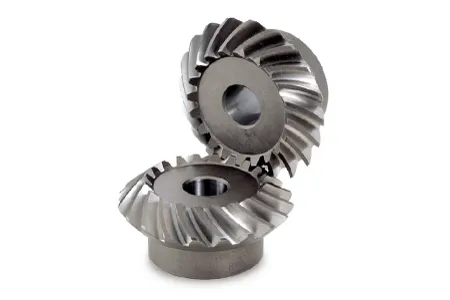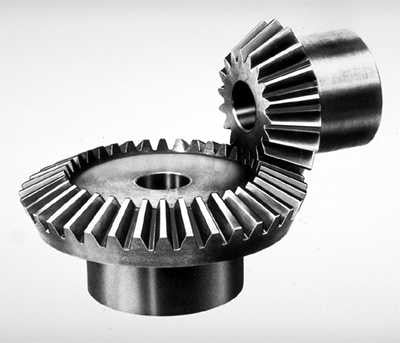Product Description
Product Description
Rotary speed reducer/slewing drive
Main fetures:
1.large speed ratio range
2.small volume,low weight ,saving space for mounting.
3.high efficiency,high mechanical strength and high quality aluminum alloy housing
4.long life service,large output torque,low noise and little vibration
5.low temperature rise,omnibearing installation ,easy to connect with other machinery.
6.high carry ability,elegant apperance.
7.CE standard,input power can be 0.06KW-15KW
8.stable transmission
Product Parameters
Detailed Photos
FAQ
Q: How to order?
A: send us inquiry → receive our quotation → negotiate details → confirm the sample → sign contract/deposit → mass production → cargo ready → balance/delivery → further cooperation.
Q: How about Sample order?
A: Sample is available for you. please contact us for details. Contact us
Q: Which shipping way is avaliable?
A: DHL, UPS, FedEx, TNT, EMS, China Post,Sea are available.The other shipping ways are also available, please contact us if you need ship by the other shipping way.
Q: How long is the deliver?
A: Devliver time depends on the quantity you order. usually it takes 15-25 working days.
Q: My package has missing products. What can I do?
A: Please contact our support team and we will confirm your order with the package contents.We apologize for any inconveniences.
Q: How to confirm the payment?
A: We accept payment by T/T, PayPal, the other payment ways also could be accepted,Please contact us before you pay by the other payment ways. Also 30-50% deposit is available, the balance money should be paid before shipping.
| Application: | Motor, Electric Cars, Motorcycle, Machinery, Marine, Agricultural Machinery, Car |
|---|---|
| Hardness: | Hardened Tooth Surface |
| Layout: | Coaxial |
| Gear Shape: | Bevel / Miter |
| Type: | Planetary Gear Reducer |
| Transport Package: | Customized Packaging |
| Customization: |
Available
| Customized Request |
|---|

How do miter gears handle changes in direction and torque transmission?
Miter gears are specifically designed to handle changes in direction and torque transmission efficiently. Here’s an explanation of how they accomplish this:
1. Right Angle Transmission:
Miter gears are primarily used to transmit rotational motion at a 90-degree angle. When two miter gears with intersecting shafts are meshed together, they allow the input and output shafts to be positioned perpendicular to each other. This right angle transmission capability enables changes in direction within a compact space.
2. Interlocking Tooth Design:
Miter gears have teeth that are cut at a specific angle to match the gear’s cone shape. When two miter gears mesh, their teeth interlock and transfer torque between the gears. The interlocking tooth design ensures a smooth and efficient torque transmission, minimizing power loss and maximizing mechanical efficiency.
3. Bevel Gear Configuration:
Miter gears belong to the bevel gear family, which includes straight bevel gears and spiral bevel gears. Straight bevel gears have straight-cut teeth and are suitable for applications with moderate torque and speed requirements. Spiral bevel gears have curved teeth that gradually engage, providing higher torque capacity and smoother operation. The choice between straight and spiral bevel gears depends on the specific application’s torque and performance requirements.
4. Meshing Alignment:
Proper alignment of miter gears is crucial for efficient torque transmission and smooth operation. The gears must be precisely positioned and aligned to ensure accurate meshing of the teeth. This alignment is typically achieved using precision machining and assembly techniques to maintain the desired gear contact pattern and tooth engagement.
5. Load Distribution:
When torque is transmitted through miter gears, the load is distributed across multiple teeth rather than concentrated on a single tooth. This load distribution helps to minimize tooth wear, reduce stress concentrations, and increase the overall load-carrying capacity of the gears.
6. Lubrication:
Proper lubrication is essential for the smooth operation and longevity of miter gears. Lubricants reduce friction and wear between the gear teeth, ensuring efficient torque transmission and minimizing heat generation. The type and method of lubrication depend on the specific application and operating conditions.
7. Backlash Control:
Backlash refers to the slight clearance between the mating teeth of gears. Miter gears can be designed with specific tooth profiles and manufacturing techniques to control backlash and minimize any unwanted movement or play. This helps maintain accuracy and precision in direction and torque transmission.
In summary, miter gears handle changes in direction and torque transmission through their right angle transmission capability, interlocking tooth design, bevel gear configuration, precise meshing alignment, load distribution across teeth, proper lubrication, and backlash control. These features make miter gears an effective choice for applications that require efficient and reliable direction and torque transmission.

Can miter gears be used to redirect rotational motion in machinery?
Yes, miter gears can be used to redirect rotational motion in machinery. Let’s delve into the details:
1. Change in Direction:
Miter gears are specifically designed to change the direction of rotational motion. By meshing two miter gears together, the input rotational motion can be redirected at a 90-degree angle. This ability to change the direction of rotation makes miter gears ideal for applications where a change in the orientation of the machinery or the direction of movement is required.
2. Perpendicular Shaft Arrangement:
Miter gears achieve rotational redirection by utilizing a perpendicular shaft arrangement. The intersecting shafts of the gears allow for the input and output shafts to be oriented at a right angle. As a result, when one gear rotates, it transfers the rotational motion to the other gear at a 90-degree angle, redirecting the motion along a different axis.
3. Compact Design:
Miter gears have a compact design, which is advantageous when redirecting rotational motion in machinery. Their conical shape and intersecting shaft arrangement allow for efficient use of space. This compactness is particularly beneficial in applications where there are space constraints or a need to optimize the overall size of the machinery.
4. Precise and Reliable Redirection:
Miter gears provide precise and reliable redirection of rotational motion. When designed and manufactured with precision, the straight teeth of miter gears ensure smooth meshing and engagement, resulting in minimal backlash and accurate transmission of rotational motion. This precision allows for consistent and dependable redirection of the rotational motion without loss of power or efficiency.
5. Speed Adjustment:
In addition to changing the direction of rotation, miter gears can also be used to adjust the speed of the output shaft. By varying the number of teeth on the gears or incorporating additional gears, the rotational speed can be increased or reduced as desired. This speed adjustment capability adds flexibility to the machinery, enabling it to adapt to different operational requirements.
6. Common Applications:
Miter gears find wide applications in various machinery where rotational motion redirection is needed. They are commonly used in automotive differentials, robotics, machine tools, printing machinery, camera lenses, and many other mechanical systems. Their ability to redirect rotational motion reliably and efficiently makes them a popular choice in these industries and beyond.
In summary, miter gears are well-suited for redirecting rotational motion in machinery. Their ability to change the direction of rotation, compact design, precise and reliable operation, speed adjustment capability, and widespread use in different industries make them a valuable component for achieving rotational motion redirection in various mechanical systems.

What industries commonly use miter gears in their applications?
Miter gears are widely employed in various industries due to their unique characteristics and advantages. Here are some industries that commonly use miter gears in their applications:
1. Automotive Industry:
In the automotive industry, miter gears are commonly found in differentials. Differentials are responsible for distributing torque between the wheels, allowing them to rotate at different speeds during cornering. Miter gears play a crucial role in transmitting power from the driveshaft to the wheels at a right angle, enabling efficient torque distribution.
2. Robotics:
Miter gears are extensively used in robotics for transmitting power and motion between intersecting shafts. Robots often require changes in the direction of rotation, and miter gears enable smooth and efficient redirection of power at a 90-degree angle. They find applications in robotic arms, grippers, and various other robotic mechanisms.
3. Manufacturing and Machinery:
Miter gears are utilized in manufacturing and machinery for power transmission and speed adjustment. They find applications in various types of machinery such as printing machinery, woodworking tools, and conveyor systems. Miter gears allow for efficient transmission of power between perpendicular axes, enabling the precise and controlled operation of these machines.
4. Aerospace and Defense:
In the aerospace and defense industries, miter gears are employed in various applications. They are used in aircraft engines, navigation systems, weapon systems, and other critical mechanisms. Miter gears provide reliable power transmission and direction changes in space-constrained environments.
5. Marine Industry:
Miter gears find applications in the marine industry for transmitting power and motion between intersecting shafts on boats, ships, and other watercraft. They are used in propulsion systems, steering mechanisms, and other marine equipment that require changes in shaft direction.
6. Camera and Optics:
Miter gears are utilized in camera lenses and other optical equipment to change the direction of rotational motion. They enable precise adjustment of focus, zoom, and other lens functions. Miter gears help ensure accurate alignment and smooth operation in optical systems.
7. Other Applications:
In addition to the industries mentioned above, miter gears are also found in applications such as mechanical clocks, medical devices, agricultural machinery, and more. Their versatility and ability to transmit power at a right angle make them suitable for diverse mechanical systems.
In summary, miter gears are commonly used in industries such as automotive, robotics, manufacturing and machinery, aerospace and defense, marine, camera and optics, as well as in various other applications. The unique capabilities of miter gears make them valuable for efficient power transmission and direction changes in a wide range of industries and mechanical systems.


editor by CX 2023-10-19